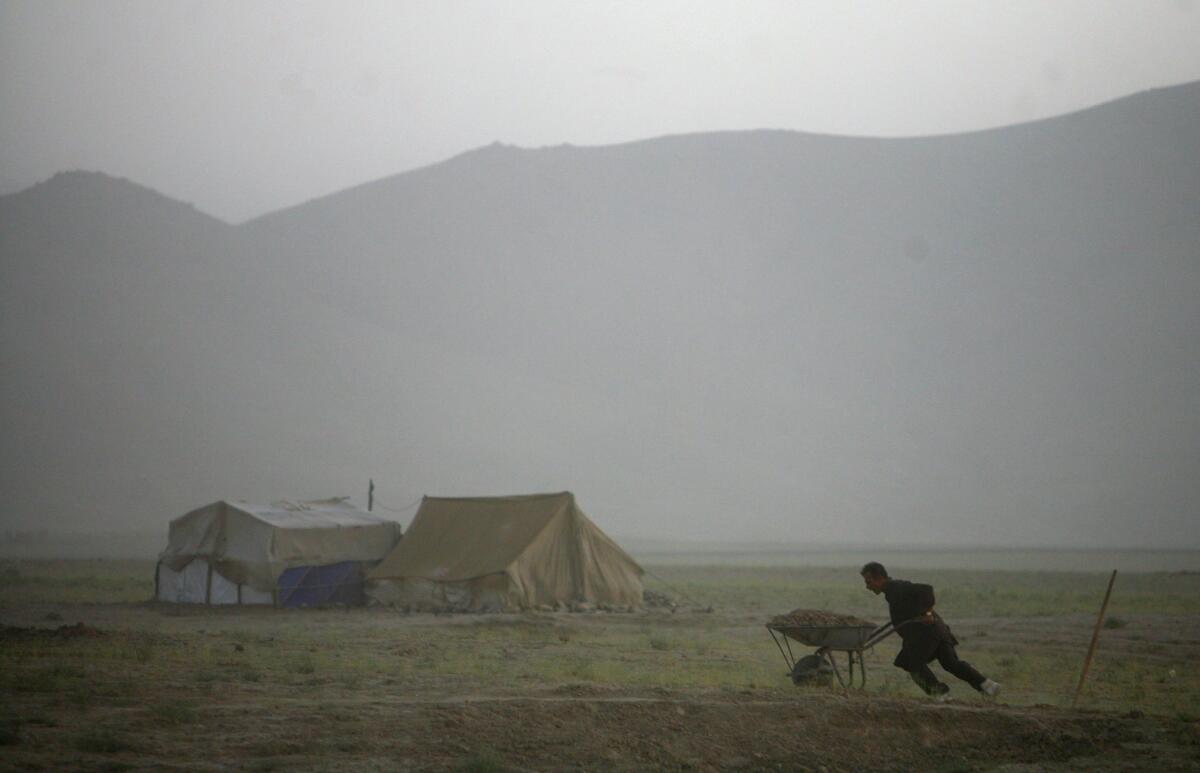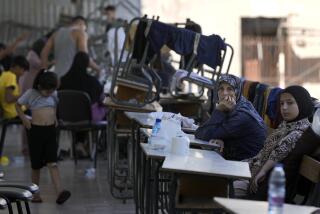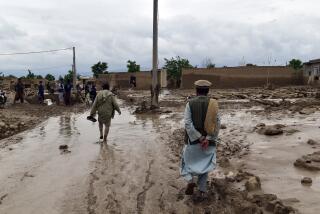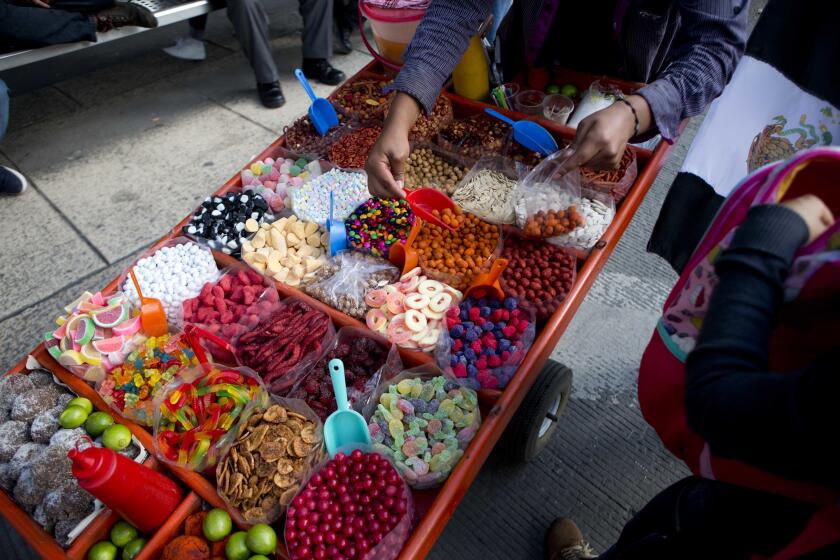Adrift in their own land, Afghanistan’s displaced see their population swell
Reporting from Kabul, Afghanistan — A newly released Amnesty International report has found a “staggering” increase in the number of Afghans driven from their homes by the deepening unrest, political instability and economic stagnation in the country.
The report, “My Children Will Die This Winter: Afghanistan’s Broken Promise to the Displaced,” concludes that the most neglected are not necessarily those who’ve made perilous trips seeking asylum in Europe, but those who’ve been uprooted and left to wander and seek shelter in their own country.
More than 1.2 million Afghans are now displaced – a twofold increase in three years. The report, made public late Monday, said that more than 118,000 have fled in the first four months of 2016 alone.
Though the 178,000 Afghans who have sought asylum in Europe over the last year and a half have received steady media attention, those who have sought refuge inside the country have gone largely unnoticed.
Nassim Majidi, director at Samuel Hall, a Kabul-based think tank, said the focus in Afghanistan should be on integrating the huge numbers of displaced people, rather than treating them as outsiders.
“Those forced to flee their homes, by and large, lived in squalid conditions and were often housed in makeshift shelters with no protection from the hot summers and cold winters,” the report said of the nearly 1,000 people who are counted as newly displaced each day.
Those who live in makeshift camps that dot the nation’s urban centers have found themselves in a state of un-ending limbo.
Qand Agha, 32, has spent the last seven years in Kabul’s Chaman-e Babrak camp, which houses more than 700 other displaced families.
The settlement -- defined by simple mud houses, open sewers and dirt roads -- stands in contrast to its glitzy neighbors.
Only a few hundred feet away lie symbols of Kabul’s wealth, brightly colored wedding halls -- complete with light-up replicas of the Eiffel Tower -- and a plastic surgery center offering $300 rhinoplasties.
“We are the people who suffered through decades of bomb blasts and flying bullets, but now we are left here in this squalor with no hope for a future,” said Bismillah, another camp resident in his mid-40s.
The aid that once flowed to the city’s displaced populations has seemingly dried up in the last two years.

“Before [nonprofits] and businessmen would come with blankets, firewood and food assistance, but we haven’t seen anything in two years now,” said Qand Agha.
In the past, Qand Agha said, well-to-do Afghans would come by and hand out money or supplies. But not anymore.
“Now, even those people can’t find work to feed themselves, and those who have the money get on rickety boats to Europe.”
The lack of attention described by the Chaman-e Babrak residents comes despite the Afghan government’s endorsement of a new national policy in 2014, aimed at assisting the nation’s internally displaced people.
Though that policy was envisioned as a comprehensive solution to the nation’s growing refugee problem, Amnesty said it has amounted to little more than a “broken promise” that has done little to address the needs of one of Afghanistan’s most vulnerable populations.
This lack of progress, said Amnesty, is the result of several intersecting issues that seemed to consume the nation in the last two years.
The plan was approved in the last days of the administration of former President Hamid Karzai. The 2014 presidential election that followed dragged on for more than 10 months and was plagued with accusations of widespread, government-assisted fraud.
The tensions within the national unity government grew worse when President Ashraf Ghani was forced to accept his election rival, Abdullah Abdullah, as his chief executive.
And the economic downturn made matters worse.
For Qand Agha, the storm of negative developments left the nation’s displaced people to fend for themselves, often treated as second-class citizens.
“When our children go to school they are made fun of for being from the camps. Teachers and students mock them, saying: ‘You are dirty,’ ‘you don’t bathe,’ ‘you have no shoes.’”
Though his home in the eastern province of Laghman is only a two-hour drive from Kabul, Qand Agha said rising insecurity makes it impossible for his family, including four children, to return.
“Day or night, there is no relief from the violence. At night people hide in fear of airstrikes, during the day they are caught in the crossfire of the battles between the security forces and the Taliban.”
However, it’s not just the Taliban and foreign forces that pose a threat to the lives of Afghans.
In the eastern province of Nangarhar, thousands have been forced to flee their homes as a new group of fighters claiming to be allied with the Iraq and Syria-based Islamic State have made inroads.
Displaced people in Nangarhar said even government officials who have gathered forces to take on these new fighters appear to have done little to help those living in tents and makeshift homes in Jalalabad -- the provincial capital -- and Kabul.
“People’s expectations are for local integration. The political and development communities need to implement local integration options,” said Majidi.
The camps, Majidi said, have only further separated the displaced people from local populations.
Latifi is a special correspondent.
See the most-read stories this hour >>
ALSO
Iraqi troops drive into Fallujah in offensive to retake it from Islamic State
Skyscrapers? Check. Parks? Check. People? Still needed.
The Philippines has 1.8 million abandoned children. Here’s what keeps many from adoption
More to Read
Sign up for Essential California
The most important California stories and recommendations in your inbox every morning.
You may occasionally receive promotional content from the Los Angeles Times.










